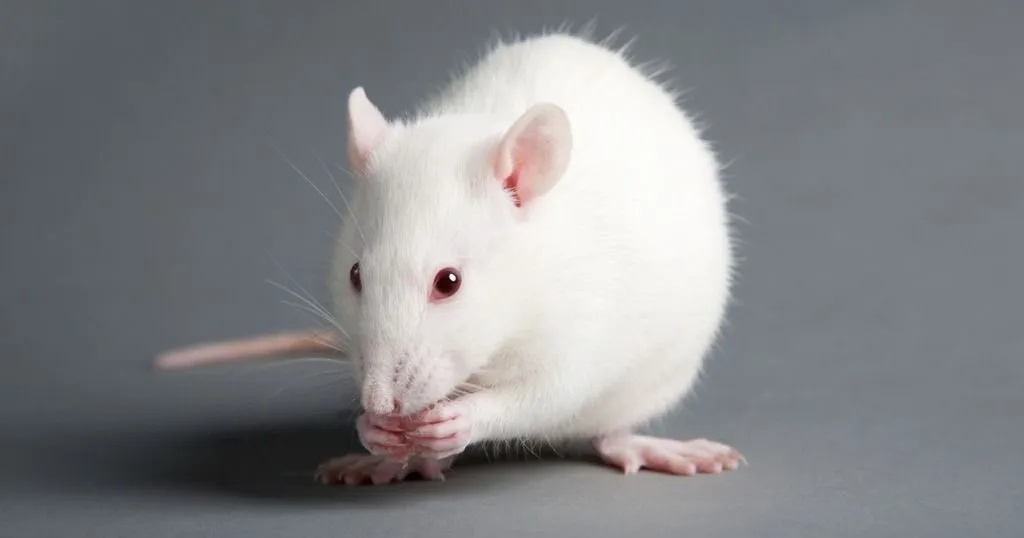Depressed with a failing reward system: social stress disrupts brain waves

Chronic social stress has a huge impact on well-being. Gamma oscillations have been found to be an electrophysiological link between social stress and reward processing.
Posted by
Published on
Tue 01 Oct. 2019
Topics
| Depression | EthoVision XT | Rats | Social Behavior Research | Social Interaction |
Social interactions and the nucleus accumbens
Depression and social rewards
In humans, social interactions are extremely important to emotional well-being. Social interactions activate a reward system in the brain, making us feel good. Impairment of this reward system leads to feeling less pleasure from social interactions, and thus to mood disorders like depression. Dr. Ann Mary Iturra-Mena has investigated this system, together with her colleagues from Chile and the United States.
Reward system and depression
The reward system involves a brain region called the nucleus accumbens (NAc). Among other things, the NAc motivates us to partake in social interactions, which in turn increases brain activity. It seems that during reward processing, it also produces gamma oscillations.
Furthermore, there seems to be a link between gamma oscillation alterations and major depression. However, it is not yet known what role those oscillations play in depressed and healthy individuals during social interaction.
Gamma oscillations and social stress
Social stress severely decreases the activity of the reward system, resulting in anhedonia. In this study, researchers aimed to find out the effect of chronic social defeat stress (CSDS) on gamma oscillations during social interaction. They expected the gamma oscillation to be disrupted during social interaction, and thus they measured brain waves of non-stressed and stressed rats in social situations.
Social behavior experiments
CSDS exposure
For the behavioral component, two groups of rats were tested, one of which was exposed to CSDS while the other was not (control group). CSDS was inflicted by placing the stressed rats in the home cage of a conspecific daily for 7 days, which usually resulted in intruder defeat or subordination.
Social preference-avoidance test
To test the influence of CSDS on social behavior, the rats were placed in an open field arena containing a transparent, perforated box. The rat was allowed to explore for 2.5 minutes, during which the time spent in the interaction zone was recorded.
Then, a novel rat was placed inside the small box, and the experimental rat could explore for an additional 15 minutes. Total interaction time with the novel rat was measured using Noldus EthoVision XT, and heat maps were generated to visualize the areas in which the experimental rats spent most of their time. Stressed rats with interaction times two standard deviations below the mean of the non-stressed group were chosen for further experimentation.
Spontaneous social interaction
Using a second open field test, gamma oscillation was measured through brain implants in the rats’ NAc. The goal was to test the influence of the social distress on social interactions and on the brain waves.
After habituation, the rats were allowed to explore the open arena for 5 minutes (non-social condition). Then, a small transparent cube was introduced as a novel object and subsequently removed after 5 more minutes. Lastly, a second rat was introduced in the arena, and both could interact freely for another 5 minutes (social condition). Noldus EthoVision XT was used to track and analyze the rats’ movements.
Links between gamma oscillation and social behavior
Main results
Dr. Iturra-Mena and her team aimed to find an electrophysiological link between social interaction and a reward processing brain region like the NAc. This link now seems to be found, and consists of high-gamma oscillations. In non-stressed rats, these oscillations increased during social interactions. However, stressed rats showed no differences in high gamma between social and non-social interactions.
NAc as a switchboard
Earlier research suggests that NAc might be a “switchboard”, capable of regulating signal exchange and “selecting” a dominant input. This could mean that, when creating high-gamma oscillations in non-stressed rats, other brain regions are synchronized to the NAc, and are thus capable of influencing the rats’ behavior as well.
Furthermore, it is possible that distress is capable of influencing the connection between NAc and the cortex, resulting in a decrease of gamma power in stressed organisms. This could potentially lead to failure of processing of social behavior input in the NAc.
Dopamine and gamma oscillations
Normally, it seems, dopamine (DA) in the NAc generates oscillations in gamma frequency during social interactions. Based on this theory, scientists propose that DA levels decrease in stressed rats whenever they interact with an unfamiliar conspecific. This then leads to alterations in their brain which cause a decrease of gamma oscillation in the NAc during social interaction.
Other research suggests that social interaction does not cause much DA release towards the NAc in stressed mice compared with non-stressed mice. However, DA concentrations in NAc have not yet been measured during social interaction in stressed rodents, so that puzzle piece is still missing.
Conclusion
As found in previous research, Iturra-Mena’s study suggests that high-gamma oscillations are involved in the rewarding effect caused by a conspecific being present, and socially interacting with it. Furthermore, the oscillations can be disrupted by chronic social stress, resulting in stress-related disorders like anxiety and major depression.
References
Iturra-Mena, A. M.; Aguilar-Rivera, M.; Arriagada-Solimano, M.; Pérez-Valenzuela, C.; Fuentealba, P. & Dagnino-Subiabre, A. (2019). Impact of stress on gamma oscillations in the rat nucleus accumbens during spontaneous social interaction. Frontiers in behavioral neuroscience, 13, 151.
Related Posts

Zinc deficiency, depression and electrical signals in the brain

Our gut microbiota influences how we feel

